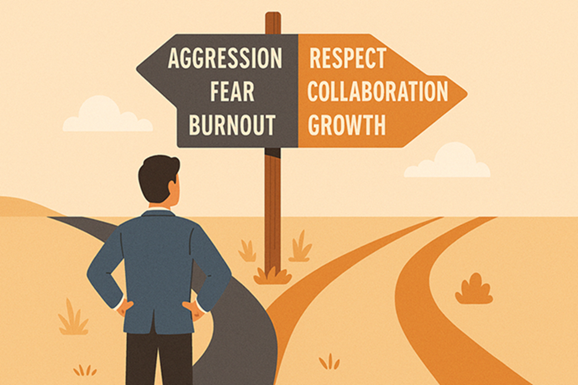
This is a guest-post from Deepa Jayaram, a champion of people and process.
We’ve all heard the stories worse, lived them. Managers shouting in meetings, insulting team members, even cursing their families to push for results. And while this behavior is often brushed off as ‘tough leadership,’ it raises a critical question: At what cost are we achieving the targets?
Hitting targets is part of a leader’s job, but how those targets are achieved matters just as much. The line between being demanding and being demeaning should never blur. Yet, in far too many workplaces, that line is crossed. Sure, the numbers might look good for a while, but under the surface, morale is gone, trust is broken, and your best people are already halfway out the door.
So why does bullying still get a pass? In many workplaces, it’s become normalized. Some equate aggression with authority. Others stay silent, fearing retaliation or assuming that results justify the means. But silence enables toxicity, and over time, it corrodes culture, performance, and well-being.
Here’s the hard truth that many leaders still ignore: People don’t leave companies, they leave managers.
In fact, Gallup research shows that 75% of voluntary employee turnover is tied directly to the manager. The fact is that no one wants to stick around in a place where they feel disrespected or afraid. That kind of environment isn’t sustainable, no matter how high your targets are.
You’re setting the standard, whether you mean to or not
As a leader, you’re not just responsible for results, you are responsible for how those results are achieved. Your words, your tone, and your actions all set the bar for your team. If you are blowing up in meetings or letting someone else’s toxic behaviour slide, you are silently saying, “This is okay here.”
Leadership means leading by example, even when it’s uncomfortable. Especially when it’s uncomfortable. True leadership isn’t about fear, it’s about influence. It’s about creating an environment where people want to give their best, not because they’re afraid but because they feel respected, seen, and supported. If you see or hear something that crosses the line, whether it is mocking, shouting, or power plays, it’s on you to address it. Quietly if needed, firmly always. Culture doesn’t just happen. We build it one decision at a time. One conversation at a time.
There’s a better way
Take someone like Satya Nadella. When he took over as CEO at Microsoft, he didn’t storm in barking orders. He led with empathy, humility, and a strong belief in the growth mindset. He focused on creating psychological safety, not pressure. And the results followed.
And the data backs this up. Toxic leadership has been linked to a 50% drop in collaboration, a 48% increase in employee stress, and massive attrition. On the other hand, teams that feel supported and respected are more engaged, more productive, and 23% more profitable (Gallup).
A quick gut check
Ask yourself:
- Do people on my team feel safe to speak up?
- Am I the kind of leader I’d want to work for?
- Have I addressed bad behavior or just hoped it goes away?
This isn’t about being “soft.” It’s about being smart. Teams don’t need to be afraid of you to deliver. They need to trust you. We don’t build high-performing teams by breaking people down. We do it by building them up with clarity, respect, and consistency. And if that’s not how your leadership looks today, what’s the good news? You get to change it.